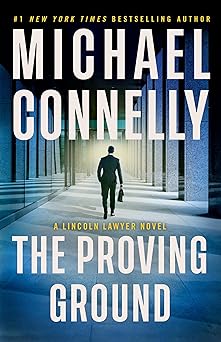
Introduction & Context
With Return of the Spider, James Patterson delivers a provocative addition to the long-running Alex Cross saga—one that reaches back into the earliest days of his career and resurrects shadowy ties from his past. Ostensibly a sequel to Along Came a Spider, the novel reframes familiar ground by probing how the cat-and-mouse game between Cross and one of his most dangerous adversaries began in the first place—and whether that beginning still holds hidden truths.
In many ways, this is a book about origins, memory, and the inevitability of confrontation. Patterson draws on the legacy (and lore) of the Cross saga, leveraging nostalgia for longtime fans while trying to inject fresh tension and stakes. The result is a thriller that speaks both to where Cross has been—and where he might still be going.
Below is a detailed breakdown of the book’s strengths, weaknesses, themes, pacing, characters, and overall impact for readers.
Synopsis (Without Major Spoilers)
In Return of the Spider, police discover a hidden journal titled Profiles in Homicidal Genius, one kept by the serial killer Gary Soneji. That journal is more than a catalog of crimes: it hints at missteps and blind spots in a past investigation involving a younger Alex Cross. The clues lead Cross back to his rookie days, retracing how Soneji evolved from a substitute teacher into a methodical murderer, and what pivotal decisions Cross made along the way.
As Cross revisits old evidence and confronts suspects long presumed dormant, he begins to suspect that Soneji’s designs were never purely reactive—they were anticipatory. The plot drives him—or perhaps drags him—back into a web of moral ambiguity, where the past is not just a fixed chain of events but a living trap.
In classic Cross fashion, he must balance solving the case with protecting those he loves, all the while questioning how much of what we remember (or believe) can be trusted.
What Works Well
1. Revisiting the Mythology
One of the novel’s most compelling aspects is how it leans into Cross’s backstory. For longtime readers, the nostalgia factor is strong: echoes of Along Came a Spider resonate throughout. Patterson teases out connections that feel intentional rather than tacked on, and he uses the journal device to open new lines of inquiry into old plot threads. This retrospective framing gives fans a sense of continuity while adding new layers.
2. Cat-and-Mouse Dynamics
The tension between Cross and Soneji remains one of the most intriguing in the series. In Return of the Spider, Patterson heightens that by making Soneji less a reactive opponent and more a long-game planner, as though his chessboard was laid years ago. The strategic interplay, the clues planted as misdirection, and the psychological probing—these elements create suspense that pulses throughout.
3. Pacing and Momentum
For much of the narrative, Patterson sustains a brisk pace. Chapters are compact, momentum rarely stalls, and narrative tensions (cliffhangers, sudden reversals, shifting motives) pull the reader forward. Even when the plot delves into forensic detail or diary revelations, the forward push remains—rarely letting the story linger too long in one place.
4. Moral Ambiguity & Memory
A central theme here is that memory is mutable, that what Cross—or any investigator—thought was true may have been incomplete or consciously shaped. As he re-examines evidence, he’s forced to wrestle with uncomfortable possibilities: that youthful errors or assumptions may have allowed Soneji room to grow. That tension—between idealism and fallibility—gives the novel depth beyond procedural thrills.
5. Emotional Stakes
Patterson underlines that Cross is not just a detective but a human being with family, vulnerabilities, regrets. The new revelations from the journal threaten not only his professional reputation but his internal sense of integrity. The pull of past mistakes affects how he engages loved ones and suspects in the present. That personal dimension prevents the story from becoming a sterile puzzle.
Weaknesses & Limitations
1. Predictability in Places
While the overarching twist—Soneji’s long game—carries weight, some mid-plot shifts and reveal mechanics feel familiar from previous Cross novels or crime thrillers generally. A perceptive reader might anticipate certain double-crosses or red herrings before they fully land. The device of the hidden journal, for example, is hardly new; what determines the freshness is how Patterson personalizes it to Cross.
2. Limited Novelty for New Readers
Because Return of the Spider leans heavily on backstory and callbacks, its emotional resonance depends on familiarity with Cross’s history. For readers new to the series, the motivations, stakes, and relevance of certain revelations may feel underexplained or derivative. The novel reads best when approached as part of a continuum, not a standalone entry.
3. Compression of Complex Threads
With multiple layers—past, present, mental puzzles, false leads—the book sometimes feels overstuffed. There are stretches where the novel tries to juggle too many suspects, side plots, or overlapping motives. While the pacing often keeps this manageable, a few scenes could have benefited from more breathing room or trimming of peripheral tangents.
4. Dialogue & Expository Heft
At times, the dialogue leans on expository triggers—characters explaining for the reader what they already “should” know, or summarizing past events to boot. Such moments break immersion slightly. Moreover, some characters (especially minor ones) remain relatively flat or gesture-driven rather than fully rounded.
Key Themes & Motifs
-
Memory & Revision: The book continually asks how much of what we believe to be the truth is shaped by perspective, bias, or omission. Cross’s willingness to revisit his own misinterpretations underscores the fragility of “certainty.”
-
Origins & Legacy: In charting how Soneji became who he is, the narrative explores the roots of evil—not simply in acts, but in small choices, missed warnings, and latent danger. Cross confronts how his own legacy might be haunted by early oversights.
-
Moral Responsibility: Cross’s internal struggle is whether the detective is responsible not only for catching criminals but for owning mistakes. The tension between idealism (justice, protection) and realism (missteps, fallout) is central.
-
Psychological Games: Soneji is more than a brute—he is an architect of manipulation. The interplay between predator and pursuer is as cerebral as it is visceral, with misdirection, timing, and deception all tools of the trade.
-
Family & Identity: The Cross character remains tethered to family, community, and personal code. Threats to those connections raise stakes beyond mere detection—this is about the self, integrity, and what one must live with.
Character Analysis & Dynamics
-
Alex Cross remains the emotional and narrative fulcrum. Patterson revisits a younger, less confident version of him, forcing confrontation with internal doubts and early errors. His psychological arc is as important as the external chase.
-
Gary Soneji is reimagined here less as a reactive villain and more as a long-term planner. His voice, through the journal, offers insight into the mind of someone who believed he was always a few steps ahead. That shift gives him renewed menace.
-
Supporting Cast (investigators, witnesses, older versions of characters) serve well as foils or mirrors, though many of them are constructed to support the central duel. A few characters break away with surprising agency, but most remain in relative shadow.
-
Interpersonal Tension: Cross’s relationships (colleagues, family, subordinates) are strained by the revelations. Patterson uses these moments to puncture the investigative narrative with emotional interludes—they don’t always land perfectly, but they root the stakes in human connection.
Pacing, Structure & Narrative Flow
The novel is structured to alternate between present-day investigation and archival revelation (via journal entries, flashbacks, or reconstructed scenes). This back-and-forth reinforces theme and suspense: as Cross uncovers something in the present, he is immediately forced to re-evaluate a past moment.
Patterson’s short-chapter style works in his favor here: each chapter tends toward a micro-cliffhanger or a pivot, which makes it hard to set the book down. The narrative speed is brisk, though the density of overlapping threads occasionally triggers moments where the story feels compressed or crammed.
Overall, the structure is effective. It emphasizes the idea that the past and present are in conversation—and that a detective’s past could be bait for the future.
Reader Appeal & Audience
-
For longtime Alex Cross fans, Return of the Spider will likely feel like a treat—a chance to deepen mythos, revisit pivotal moments, and see familiar dynamics reframed. The callbacks, references, and connective tissue reward sustained series investment.
-
For thriller readers, the book offers a cerebral cat-and-mouse game with forensic intrigue, misdirection, psychological stakes, and procedural movement. While not radically reinventive, it’s solid in the genre mold.
-
For newcomers, the book is less ideal as a standalone entry. The emotional weight of revelations, the impact of callbacks, and the tension of legacy make more sense when one already knows Cross’s trajectory.
Overall Evaluation
Return of the Spider is a thoughtful, suspenseful entry in the Alex Cross canon. It doesn’t radically overhaul the franchise, but it doesn’t need to. Its strength lies in deepening rather than reinventing: peeling back layers of Cross’s past, reframing conflicts, and casting long shadows forward.
While certain plot mechanics feel familiar and the density of threads occasionally overreaches, Patterson largely succeeds in crafting a thriller that balances momentum and introspection. It’s a novel for fans who want more than just a chase—who want consequences, regret, and revelation.
On a scale (for fans and genre readers), I’d place it a strong “very good” rather than a perfect classic. It’s not flawless, but it earns its place in the Cross mythos and offers genuine moments of tension, shock, and self-reflection.
If you’re deeply invested in Alex Cross, Return of the Spider is a welcome return. If you’re just dipping in, it may prompt you to go back and read Along Came a Spider (and beyond) so you can fully taste its resonance.





